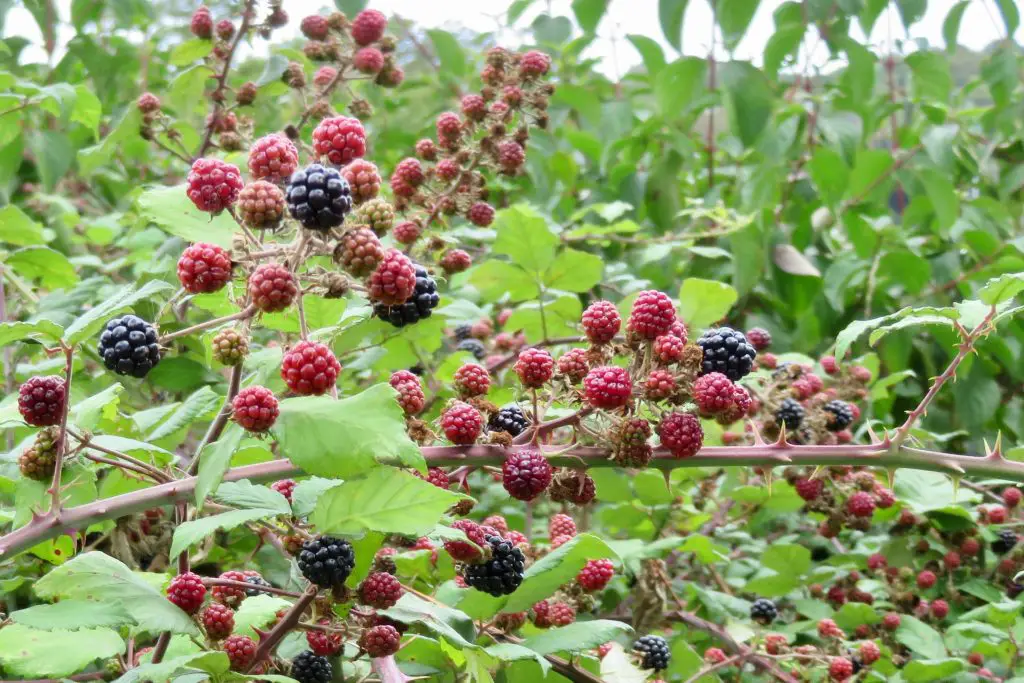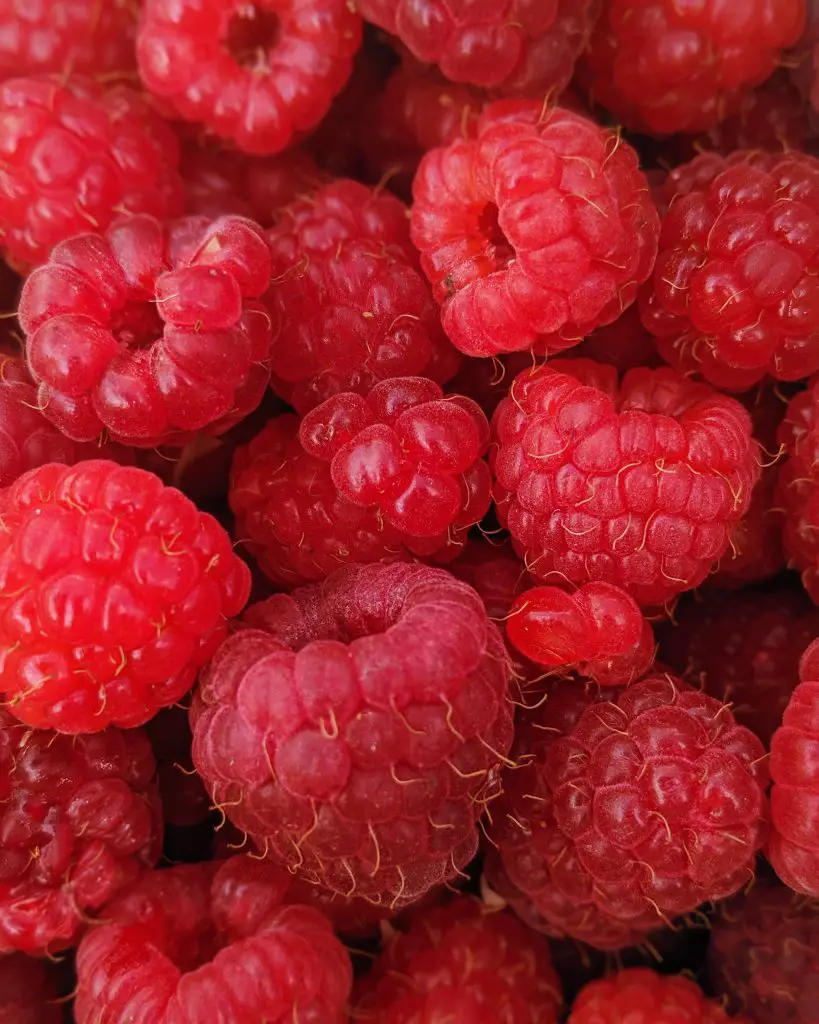Are There Different Types Of Raspberries? Raspberries are an underrated fruit compared to Strawberries, particularly in the UK. They are higher-yielding than Strawberries, are really easy to grow, and require minimum maintenance.
There are two major types of Raspberries, Summer Fruiting varieties, and Autumn Fruiting varieties. The primary difference between the varieties is the age of growth on which they produce fruit. Summer fruiting varieties produce fruit on canes that are a year old whereas Autumn fruiting varieties produce fruit on this years’ growth. This difference affects the timing of the harvest and the pruning regime required to optimize fruit production.
If you have inherited plants from a friend that you are unsure what type of raspberry you have, simply plant it in the garden. If you get fruit in the first year it is Autumn variety, if you do not it is a Summer variety. And with the right pruning regime and/or selection of varieties, it is possible to extend the cropping season to about 4 months.
How Do You Prune Raspberries?
When deciding how to prune the most important thing to know is which type of raspberries you have, Summer or Autumn. The trickier of the two types is the Summer varieties as pruning can actually affect whether you get fruit. The good news is the Autumn varieties are very forgiving so if you are an absolute beginner go for Autumn fruiting varieties to start with.

The other advantage of Autumn varieties is that you will get fruit in the first season, whereas for summer fruiting varieties you will need to wait for the following season. Irrespective of the variety you choose to grow new plants should be purchased as bare-rooted plants in late winter or early spring for planting.
In terms of the soil conditions, Raspberries are really forgiving they will grow just about anywhere. However, as a general rule, they prefer moist rich soil and will benefit from a feed. The easiest way to do this is to top-dress the soil with a layer of compost that is 5 to 10 cm (2 to 4 inches) thick in late Autumn. This will minimize the weeds while feeding the soil. To read more about managing soil and minimizing weeds click here.
Autumn Fruiting Varieties
As mentioned above Autumn fruiting varieties are really easy to care for, the standard advice is to cut the Raspberry canes to the ground at the end of the growing season. For those living in the northern hemisphere, the most common month recommended to do this in is February, though any time from late Autumn to Winter is absolutely fine.

At this point, it is also a good opportunity to move any plants around. You will find that Raspberries tend to create suckers that can pop up all over the place. These suckers can be dug up and moved into your preferred position providing you with additional stock which you can use to either expand your patch or give the extra plants away to friends.
The Raspberry plants will begin to create vigorous new growth in the Spring and the plants will typically reach a height of 150cm (5 ft). To keep the plants in check it may be necessary to tie them onto a support to stop them from falling over. The need to tie plants becomes increasingly important from midway through the season as the weight of the fruit increases on the cane.
However, to extend the season of fruiting you can prune the Autumn Fruiting varieties in a less conventional manner. This is done by only cutting approximately half of these canes to ground level and leaving the remaining canes untouched.
The canes that are untouched and are one year old, will produce a crop in summer, around the same time a Summer Fruiting varieties. This because the plant has a head start compared to those canes that were cut down as they do not need to put their energy into creating the canes first before creating the fruit. This will result in two flushes of fruit, one is in summer and the other is in Autumn.
It should be noted that if you are going to use this pruning technique it is important to alternate there areas you leave and those that you prune. Leaving the same area unpruned will result in the canes becoming unproductive and will exhaust the plant.
Summer Fruiting Varieties
As mentioned earlier in the article the one defining feature of Summer fruiting varieties is that they produce fruit on one-year-old cans. As such it is important to ensure when pruning the canes at the end of the season, that the current year’s growth is left otherwise you will not get any fruit.

However, it is still essential to prune out canes that have produced fruit this year and also any older canes left from previous years. The reason for this is it is important to make space for the new canes on the support structure.
It is usually easy to tell the difference between new and old canes. The key signs you are looking for are that the canes have become hard, dry, and brown. This is a tell-tale sign that these branches are now dead and will not produce more flowers or fruit.
In addition to removing the dead canes, it may also be necessary to remove some of this year’s growth. You will find that, as the plant matures, it will start to produce more canes than you can fit onto your support structure.
The other defining feature of Summer Raspberries is the length of the canes. Unlike, Autumn fruiting varieties that produce a cane that is usually 150cm (5 ft) tall Summer fruiting varieties will produce a cane that is up to 3m (10 ft) long. When tying these canes to the support loop them up and down across the face of the structure rather than cutting the canes to suit the size of the structure. This will maximize the area on the cane where fruit can form.
To purchase raspberry canes go to Thompson & Morgan’s website, they have a wide variety to chose from.
When To Harvest The Berries?
The easiest way to tell that a berry is ready to harvest is by looking at its colour. Berries will start off white or pale in colour however, as they ripen the colour will deepen and become richer. An example of this is illustrated in the picture below which shows a bunch of Berries at different stages of ripeness.

Unfortunately, the color will vary with different varieties so you will need to taste them to find out the precise color. However, it only takes a few attempts to work out which ones are ready by sight.
When the cropping season commences it is advisable to pick the berries every few days as they will ripen quickly. If you are only picking a few at a time initially they can be frozen by popping them in a resealable plastic bag in the freezer. You will find that the harvest builds up to something substantial quite quickly.
